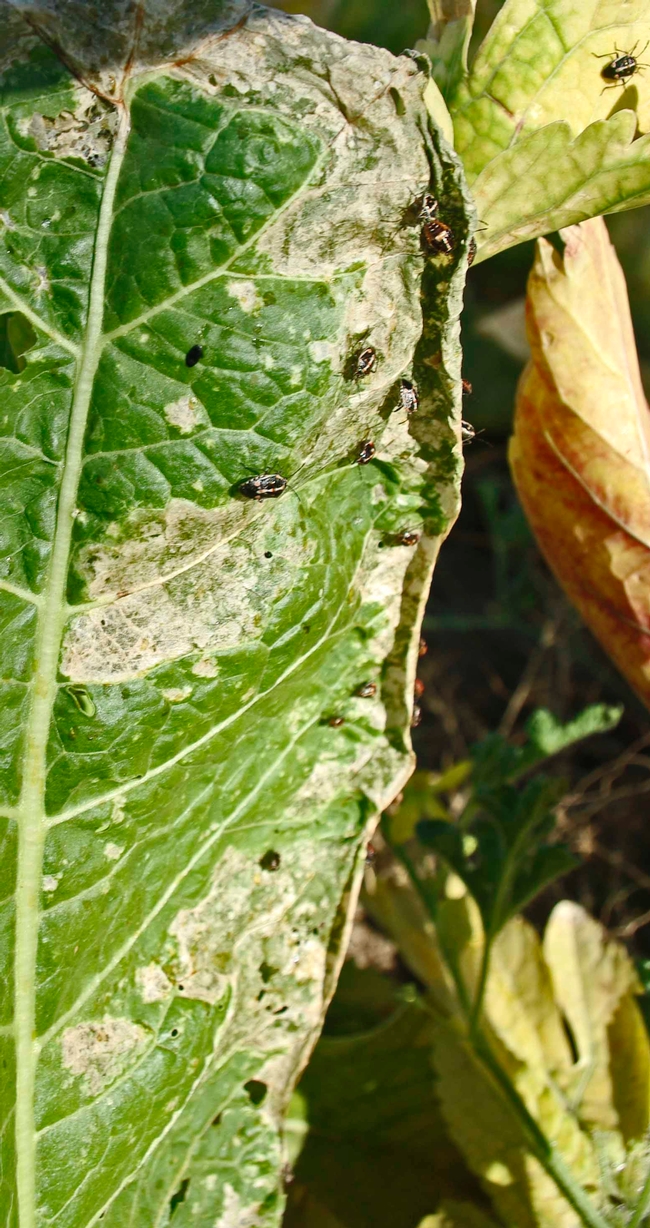Bagrada Anyone?
By Andrea Peck
What are the red and black bugs that I am seeing on my arugula?
It sounds like the infamous bagrada bug. Also called the painted bug, this insect is a member of the stink bug family. Its name sounds like a fancy dance step and its appearance, shiny black with orange-red and white highlights, is equally slinky. Often the male and female will bustle about like interconnected locomotives. Often is a key word here because this is a shameless mating maneuver that occurs often. You can expect lots of little bagradas swimming unabashedly amongst your plants. Newly hatched bagradas are small, but their dramatic orange-red coloring makes them highly visible.
In order to flourish, bagrada bugs need to host on plants in the mustard family. Despite their preference for cole crops (broccoli, cabbage, cauliflower, kale and turnip) that grow best in cold weather, the bagrada is dependent on warm temperatures for development. The adult is most apt to fly in temperatures of 85°F. You would think this would be a limiting set of requirements, but the invasive bagrada is a determined sort. During the heat waves of late summer, a bagrada family visit may erupt into a full scale infestation. At this time, numbers may reach such levels that the bagrada may become an equal opportunity eater and vary its diet towards tomatoes, peppers and melons. Small plants and seedlings are highly prized by this gourmand.
The bagrada literally makes mincemeat of its food source. The bagrada's tongue serves as a blending attachment, digestive juice injector and straw. The interior of your plant's leaves and stems don't stand a chance when this insect inserts its needle-like mouthparts, breaks down the contents and then slurps up the liquid meal like a smoothie.
Control can be gained culturally by removing the insect's host plants – those in the mustard family – near planting areas. Interestingly, removal of the pest is possible by using a hand-held vacuum. Row covers with very fine netting provide protection by excluding the pest.
.
